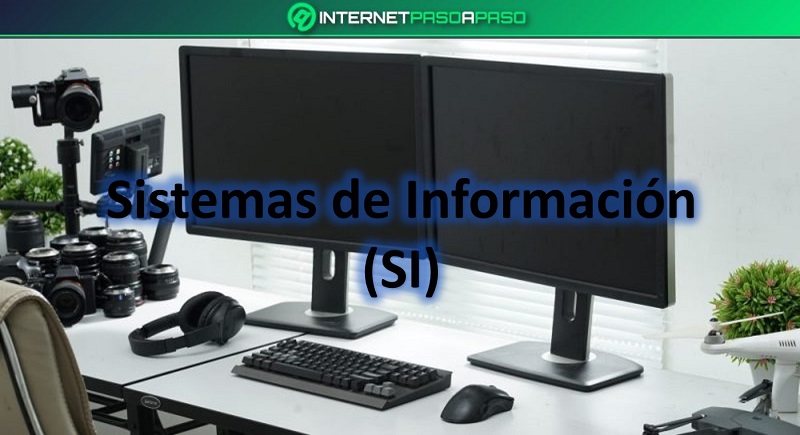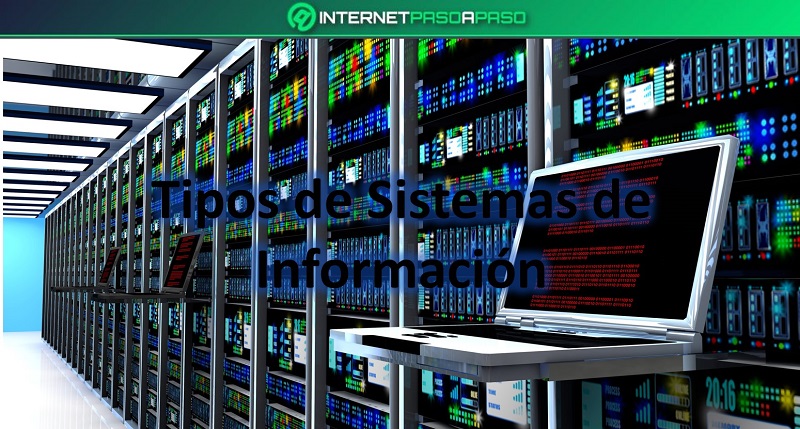
Index:
UPDATED ✅ Do you want to know more about the users of an information system and its functions? ⭐ ENTER HERE ⭐ and Learn FROM ZERO!
In this post we are going to deal the different user levels in information systems. These are due to some roles activated to different users with the To ensure security and stability in the system.
its operation it’s not very complicated, as long as we talk about it from a general and non-technical point of view. In this place you will learn everything you want to know about information systems (IS).
The points that we will deal with on this topic, will allow us to understand its importancebesides that we will learn how many information systems exist and its different types of users.
Information system What is it and what are they for?

The information system is a set of computer mechanisms that allow us to manage the data and information, in an effective and efficient way in all senses. An information system is based on action of a series of resources that are interconnected with each other, sharing information interactively based on the objective, which is to organize, process, and collect information.
All these processes are based on an ordering of resources, such as the following:
- Human Resources (HR): All the data obtained from people, ordered according to their skills and roles.
- Data: All kinds of information stored massively with the intention of organizing.
- Activities: They are all the procedures executed one after another, to manage the jobs, based on steps, and workstations.
- Information resources: This is the name given to all the technologies involved in the process.
Though computing resources can work in the same way as an information system, they are not the same, but they are part of each other.
The interaction between the SI elements is constant and consists of the following steps:
- Information input: In this first process, all the information is collected.
- information storage: At this point the files are stored in a place where they can be preserved over time.
- Information processing: all information is transformed to facilitate decision making.
- Information output: the system is processed in a data set to be able to be exported.
The process consists of a constant translation of informationwhere computing resources directly influence.
What is a user of an information system and what is it for?
A user of an information system, it is the one that can order, move and restructure a system. This varies depending on the roles and permissions granted, and the area where you work.
exist more than one type of IS usersHowever, they do not all deal with the same activities. But yes, all with the same goal, which is to maintain a completely stable system. However, the definition of user from a computing point of view, is that person who works behind a computer. Being very important for the production of content, and the management of these.
Types of users in information systems What are all the existing ones and what is their function?

As we have already explained, a user, according to the information system, is defined as a set permissions and pooled resources for a specific operator, being an essential part of the system.
User roles are categorized based on permissions, as shown below:
Direct End User
This type of user maintains direct interaction with the system team, this being the main responsible for the data feed. All activities performed by this user, affect the whole systemand as its name says, everything is handled directly.
indirect end user
The direct end user, the system does not work, however, it is in charge of using reports and other information generated by it. The responsibility given to this user varies according to the area where the person is in charge.
administrators
An admin user, supervises and intervenes in the development of the system. The permissions enabled for this, give you the responsibility of organizing the activities of the process. This user is very important in the system of information. For this reason, it has permissions that allow it to audit processes and files whenever it wants.
directors
Incorporates the system, strategic uses to strengthen the information and organization plans. In addition, it is in charge of evaluating the different risks that can be caused by failures in the SI.
Managers and Senior Executives
These users can monitor all activities in general, including among its roles the control of the entire system, having the ability to manage institutional processes. This type of user turns out to be supported by the entire system, so that the operation and interaction remain constant and stable.
Operators
the operators can access all the information reviews stored in the system, and they have the ability to send or archive them wherever they want, with the intention of organizing them. Their presence is valuable for decision-making, allowing improvement and a positive direct impact on business development.
Analyst
the analyst is the professional who is in charge of studying every detail of the information, becoming responsible for the development of the apps, thanks to his ability to design algorithms. your analysis is essential for the systemallowing important modifications that strengthen the structure, in addition to also providing technical support to users of existing applications.
Programmer
the scheduled is the user in charge of debugging and to give maintenance to the font codes. Its main objective is allow the development of certain tasks. In other words, a programmer sends instructions to computer hardware to promote, develop and execute activities.
Database Designer
Lastly, they find database designerswhose function is to structure tests and put into operation sets of algorithms and data, using all the permissions for database managementincluding in his role, ensuring the protection and security of the database.
Types of information systems What are the ones that exist?
Nowadays various information systems have been developedalthough each one of them works for a specific objective.
Among the different types of information that exist are the following:
Management Information Systems (MIS)
The MY It is a system that facilitates the collection and organization of information, being very useful in the area of management of a company or organization. In it you can see the general situation and business conditions.
Transaction Processing Systems (TPS)
This system, Its main function is to store and process all the information that refer to the commercial transactions of a business.
The Data processed through this system is used together with other support systems, influencing decision making, such as those shown below:
- Decision Support Systems (DSS): the DDS or also known as Decision Support System is a tool composed of functions and applications that influence decision making. It allows a quick graphical and statistical study of the information.
- systems executive support (EIS): With this system all the information of interest can be extracted, in order to achieve better strategies for the organization of information and data obtained.
- Group Decision Making Systems (GDSS): The GDSS allows teamwork and rapid transmission and sharing of information between team members, facilitating joint decision-making within an operation.
- Expert support systems to decision making (EDSS): To focus the work on specific areas and act as expert consultants, the EDSS system is used, useful whenever decisions are to be made within an area or set of information.
strategic systems
Strategic systems allow you to develop advantages before the competition using information together with technology for the prediction of events, allowing the creation of new objectives that are above the competitors. This system will always keep us above the competitionallowing us to develop more frequently, and an accelerated evolution.
Marketing Information System
Lastly, you have Marketing information systeman excellent software that allows the creation of campaigns through an intelligent technology system, facilitating the organization and management of collected data.
Informatic security